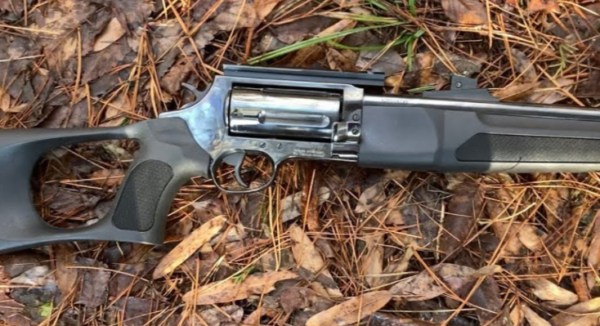The Beretta 84, a popular firearm renowned for its reliability and precision, may occasionally encounter issues, just like any other piece of mechanical equipment.
This guide seeks to address common problems faced by Beretta 84 users, providing effective solutions and preventive measures to ensure optimum functionality.

Whether you’re a seasoned owner or a novice user, understanding these potential issues will help you maintain your Beretta 84 and ensure its longevity.
12 Common Beretta 84 Problems
The Beretta 84, also known as the “Cheetah”, may sometimes face issues related to the feed ramp.
There could be a failure to feed, mainly when using hollow point ammunition. Another problem could be a stiff safety lever, particularly in earlier models.
Regular maintenance, using the right ammunition, and possibly consulting a professional gunsmith could rectify these issues.
1 . Failure to Feed


Cause
The most common cause of a “Failure to Feed” issue in the Beretta 84 is the use of improper or low-quality ammunition.
This can be due to irregular bullet shapes, inconsistent powder loads, or defective casings.
High-quality ammunition is crucial for the reliable operation of your Beretta 84.
Solution
The recommended solution for a “Failure to Feed” issue is to switch to using factory-loaded, high-quality ammunition.
Avoid using reloaded or remanufactured ammunition as they can often vary in quality. Additionally, ensure your magazines are clean and in great condition.
2 . Failure to Eject
Cause
A common issue with the Beretta 84 is a “Failure to Eject,” which is typically caused by a weak or broken ejector spring, a dirty chamber, or a worn extractor.
These components play a crucial role in the ejection process, and hence, their condition directly affects the firearm’s performance.
Solution
To address a “Failure to Eject” issue, first, inspect your ejector spring. If it’s weak or broken, replace it promptly.
Next, clean your chamber regularly to prevent the buildup of residue which can impede the ejection process.
Lastly, check the condition of your extractor. If it’s worn or damaged, consider getting it replaced.
3 . Misfires
Cause
Misfires in the Beretta 84 are often a result of issues with the ammunition or the firearm’s firing pin.
The firing pin may be blocked or impeded by accumulated debris, or the ammunition may be faulty, failing to discharge despite the trigger being pulled.
These are the most common causes of misfires in the Beretta 84.
The quality of ammunition and the cleanliness of the firing pin chamber are critical factors.
Solution
The key solution for misfires is a regular, thorough cleaning of the firearm, particularly focusing on the firing pin chamber.
This prevents the buildup of debris which could obstruct the firing pin’s movement.
If the problem persists, consider having the firing pin examined by a qualified gunsmith.
Furthermore, always use high-quality, factory-loaded ammunition to ensure reliable ignition.
4 . Stovepipe Malfunctions
Cause
Stovepipe malfunctions in the Beretta 84 typically stem from issues related to weak recoil springs, improper grip (limp-writing), or low-powered ammunition.
A weak recoil spring might not generate enough force to eject the spent case clear of the ejection port, causing it to get caught by the closing slide, and creating the ‘stovepipe’ appearance.
Weak recoil springs, improper handling, and low-powered ammunition are the most frequent causes of stovepipe malfunctions.
Solution
To rectify stovepipe malfunctions, first, inspect and replace your recoil spring if necessary.
A strong, functional recoil spring is vital for efficient ejection. Second, practice proper grip techniques to ensure that you’re not limp-writing the firearm, allowing the slide to recoil fully.
Lastly, consider switching to higher-powered ammunition for better performance.
5 . Double Feed
Cause
A “Double Feed” malfunction occurs when the Beretta 84 experiences a feed failure characterized by the presence of two cartridges attempting to enter the chamber simultaneously.
This typically happens due to a worn-out magazine spring, a faulty follower, or an improperly inserted magazine.
The condition of the magazine and how it’s inserted play a paramount role in the generation of a “Double Feed”.
Solution
To address a “Double Feed”, first, inspect your magazine’s spring and follower.
If they appear worn or damaged, consider replacing them as they’re integral components for proper feeding. Secondly, ensure that the magazine is inserted correctly and fully seated.
If problems persist, consider consulting a professional gunsmith.
6 . Slide Not Locking Back
Cause
The issue of the slide not locking back on the Beretta 84 is often the result of a worn-out slide catch spring, improper handling, or a defective magazine.
A weak slide catch spring might not provide enough tension for the slide to lock back after the last round is fired.
Moreover, improper handling might inadvertently engage the slide release lever during firing.
Lastly, a faulty magazine might fail to actuate the slide lock lever properly.
A worn-out slide catch spring, improper handling, and a defective magazine are typically the causes of the slide not locking back.
Solution
To resolve the issue of the slide not locking back, first, inspect the slide catch spring. If it is weak or worn, replace it promptly.
Practice correct handling techniques to ensure that your grip does not unintentionally engage the slide release lever during firing.
Lastly, examine your magazine, particularly the follower, to ensure it is functioning correctly and able to engage the slide lock lever. If necessary, consider replacing the magazine.
Prompt replacement of a worn slide catch spring, proper handling, and functional magazine maintenance can significantly mitigate issues with the slide not locking back.
7 . Hammer Follow
Cause
“Hammer Follow” in the Beretta 84 is a problem that typically arises due to a worn or broken sear spring, or a malfunctioning disconnector.
A worn sear spring might fail to hold the hammer back after each shot, resulting in the hammer following the slide forward.
On the other hand, a malfunctioning disconnector might not disconnect the trigger from the hammer, causing the hammer to fall with each pull of the trigger and not reset.
A faulty sear spring and a malfunctioning disconnector are generally the culprits causing “Hammer Follow”.
Solution
Addressing a “Hammer Follow” issue involves examining the sear spring and disconnector for any signs of wear or damage.
If the sear spring appears worn or broken, it should be replaced promptly. Similarly, if the disconnector is malfunctioning, it should be repaired or replaced as necessary by a competent gunsmith.
8 . Sticky Safety Lever
Cause
A “Sticky Safety Lever” in the Beretta 84 often arises due to excessive residue buildup, lack of lubrication, or damaged internal components.
The frequent use of the firearm can lead to the accumulation of gunpowder and dirt residue within the safety mechanism.
Moreover, inadequate lubrication can result in increased friction, making the safety lever hard to engage or disengage.
Solution
Addressing a “Sticky Safety Lever” involves a few critical steps. Firstly, thorough cleaning to remove any residue that might be contributing to the issue.
Secondly, regular lubrication of the safety mechanism helps to reduce friction and ensure smooth operation.
Lastly, if these steps do not rectify the problem, it’s recommended to have the firearm inspected by a professional who can identify and replace any damaged internal components.
9 . Loose Magazine Release
Cause
A “Loose Magazine Release” in the Beretta 84 usually originates from extended use, resulting in wear and tear of the magazine release mechanism, or from a weak or damaged magazine release spring.
Extended use can cause the button of the mechanism to loosen, while a weak spring may fail to apply sufficient pressure to keep the release secure.
Extended use leading to wear and tear, and a weak or faulty magazine release spring, are common causes of a “Loose Magazine Release”.
Solution
Addressing a “Loose Magazine Release” issue needs a few essential steps. Initially, inspect the release mechanism and spring for signs of wear or damage.
If the button is worn or the spring is weak, consider replacing these components.
10 . Inconsistent Trigger Pull
Cause
“Inconsistent Trigger Pull” in the Beretta 84 can typically be attributed to a few key factors: a worn or damaged sear, a worn or damaged hammer spring, or improper lubrication.
A worn sear may not engage the hammer consistently, resulting in variable trigger pull.
Similarly, a worn hammer spring might provide inconsistent pressure, affecting the trigger pull.
Solution
To effectively address an “Inconsistent Trigger Pull”, begin by inspecting the sear and the hammer spring for signs of wear or damage.
If they seem worn or damaged, replace them promptly.
Further, ensure that the trigger mechanism is adequately lubricated to reduce friction and promote smooth operation.
11 . Difficult Disassembly
Cause
“Difficult Disassembly” in the Beretta 84 is often caused by accumulated grime and residue, a lack of knowledge on the disassembly process or a worn-out disassembly latch.
Residue buildup can make it tough to disassemble the gun for maintenance.
Moreover, without proper knowledge of the firearm’s structure, disassembly can be challenging.
Solution
Addressing a “Difficult Disassembly” requires a few straightforward steps. First, clean the firearm regularly to prevent grime and residue from accumulating.
Second, familiarize yourself with the structure and disassembly process of the Beretta 84, possibly through instructional videos or manuals. Finally, inspect the disassembly latch and replace it if it’s worn.
12 . Premature Wear and Tear
Cause
“Premature Wear and Tear” in the Beretta 84 is often a consequence of insufficient maintenance, improper handling, or using incompatible ammunition.
Insufficient maintenance can lead to the buildup of residue, accelerating wear.
Improper handling, such as dropping the firearm or exposing it to harsh conditions, can cause premature wear and tear.
Solution
Counteracting “Premature Wear and Tear” involves a series of critical measures.
Regular, thorough cleaning, and appropriate lubrication will prevent residue buildup and reduce friction, extending the lifespan of the firearm.
Handling the firearm correctly and responsibly can also reduce the risk of unnecessary damage.
Lastly, using only recommended ammunition will ensure optimal performance and prevent undue wear.
Conclusion
In conclusion, the Beretta 84, like any mechanical device, is subject to common issues that can affect its function.
Identifying these issues, understanding their causes, and implementing the appropriate solutions can ensure the firearm maintains optimal performance.
Issues such as a sticky safety lever, loose magazine release, inconsistent trigger pull, difficult disassembly, and premature wear and tear can be addressed with regular maintenance, proper handling, and the use of recommended ammunition.
By taking these steps, owners of the Beretta 84 can ensure the longevity and reliability of their firearms.
FAQs
Is Beretta 84 reliable?
Yes, the Beretta 84 is generally reliable, offering robust performance provided it undergoes regular maintenance and proper handling.
What is the difference between Beretta 84 and 85?
The major difference lies in their capacity; Beretta 84 has a double-stack magazine accommodating 13 rounds, while Beretta 85 features a single-stack magazine holding 8 rounds.
How big is the Beretta 84?
The Beretta 84 has a compact size with a 3.8-inch barrel length and a 6.77-inch overall length, making it a good choice for concealed carry.
Beretta A400 Xtreme Plus Problems
Beretta A300 Outlander Problems


As the founder and owner of the domain “mygunsgeek.com”, I bring to the table a deep passion for firearms, combined with a strong commitment to sharing this knowledge with a wider audience. With years of experience exploring the inner workings of various firearms, from pistols to rifles, I have cultivated a vast expertise in this field. This has enabled me to create a platform that serves as a trusted resource for gun enthusiasts, providing comprehensive reviews, advice, and insights into the latest trends and advancements. I am dedicated to ensuring that my content is both informative and engaging, helping my readers make informed decisions about their firearm choices. For any inquiries or suggestions, feel free to reach out to me at wwwfffwww117@gmail.com. Your feedback is invaluable in shaping the content and direction of mygunsgeek.com.


